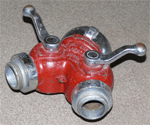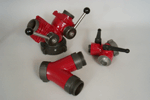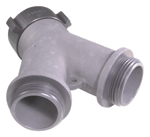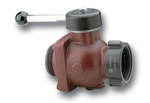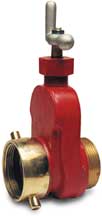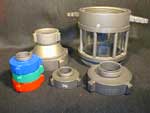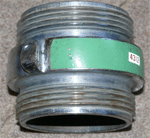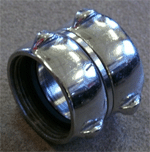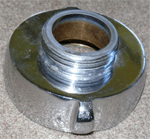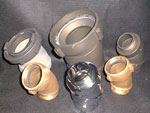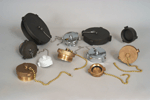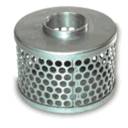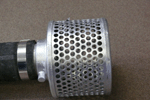Hose tools |
There are a variety of tools used in conjunction with hose lines |
| |
Common ones include:
- Hose rollers
- Spanner wrenches
- Hose strap
- Hose rope tools
- Hose chain tools
- Hose clamps
- Hose jackets
- Ramps
- Blocks
|
Hose roller |
used when pulling hose over windowsills and roof edges |
| |
 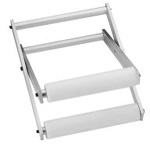 |
Hose clamp |
used to stop the flow of water in a hose line for the following reasons
- To prevent charging the hose bed during hose lay operations
- To allow replacement of a burst section of hose without shutting down the water supply
- To allow extension of a hose line without shutting down the water supply
- To allow the advancement of a charged hose line up stairs
|
| |
  |
| |
Rules to follow that apply to hose clamps are as follow:
- Apply the hose clamp at least 20 feet behind the apparatus
- Apply the hose clamp approximately 5 feet from the coupling on the incoming water side
- Stand to one side when applying or releasing the press down type of hose clamp
( the operating handle is prone to snapping open suddenly )
- Caution: Never stand over the handle of a hose clamp when applying or releasing it. The handle may swing upward in a violent motion and injure the firefighter attempting to operate the handle
- Center the hose evenly in the jaws to avoid pinching the hose
- Close and open the hose clamp slowly to avoid water hammer
|
Hose Bridges or Ramp |
Hose bridges (aka..Hose ramps) help prevent injury to hose when a vehicle crosses it |
| |
Should be used wherever a hose line crosses a street or other area where vehicular traffic cannot be diverted |
| |
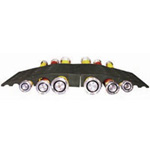  |
Chaffing block |
Devices that are used to protect fire hose where hose is subjected to rubbing from vibrations |
| |
Made of wood, leather, or sections of old truck tires |
Spanner, Hydrant Wrench, and Rubber Mallet |
Spanner wrench – used primarly to tighten and loosen hose couplings, other uses are:
- Wedge for prying
- Opening that fits gas utility valves
- Slot for pulling nails
- Flat surface for hammering
|
| |
 |
| |
Hydrant wrenches are primarily used to remove caps from fire hydrant outlets and open fire hydrant valves
- The lever may be threaded onto the head making it adjustable and the handle may be a ratchet type
- The head may be equipped with a spanner to help make or break coupling connections
|
| |
 |
| |
Rubber mallets are used to strike the lugs to tighten or loosen intake hose couplings |
| |
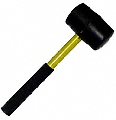 |
Hose Strap, Hose Rope, and Hose Chain |
Most useful tool to aid in carrying or handling a charged hose line is the hose strap |
| |
These devices can be used to carry and pull fire hose |
| |
Primary value is to provide a more secure means to handle pressurized hose when applying water |
| |
Another important use is to secure hose to ladders and other fixed objects |
| |
  |
